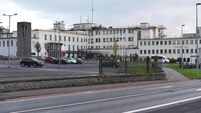Maternal deaths up to four times higher than previously believed
The Maternal Death Enquiry (MDE) report, released every three years, revealed the finding after examining deaths during childbirth in hospitals between 2009 and 2011.
CSO figures show during this period six women died. However, the MDE study — funded and backed by the HSE — said the true figure was as high as 25.












